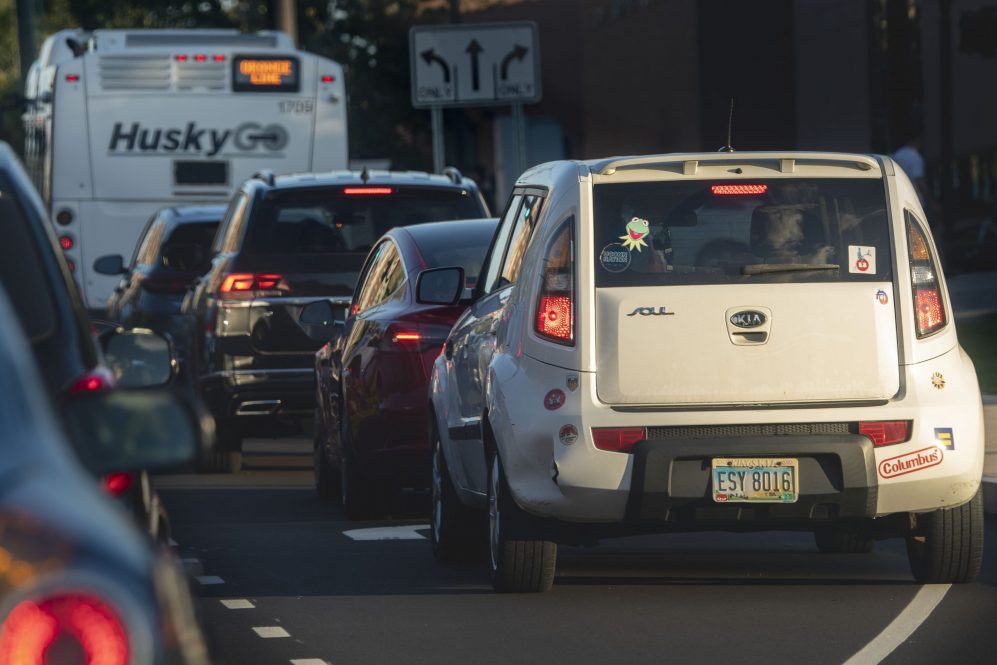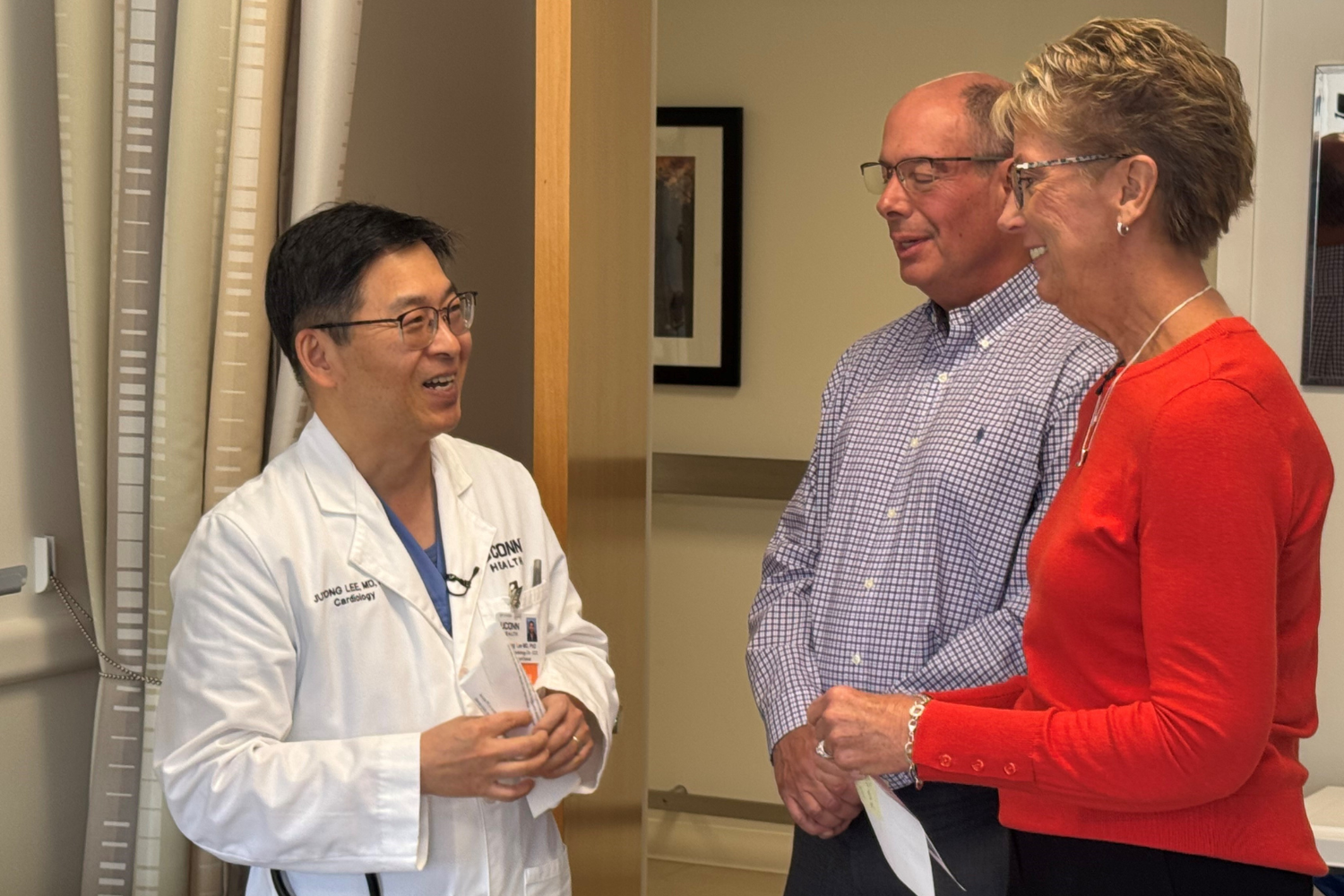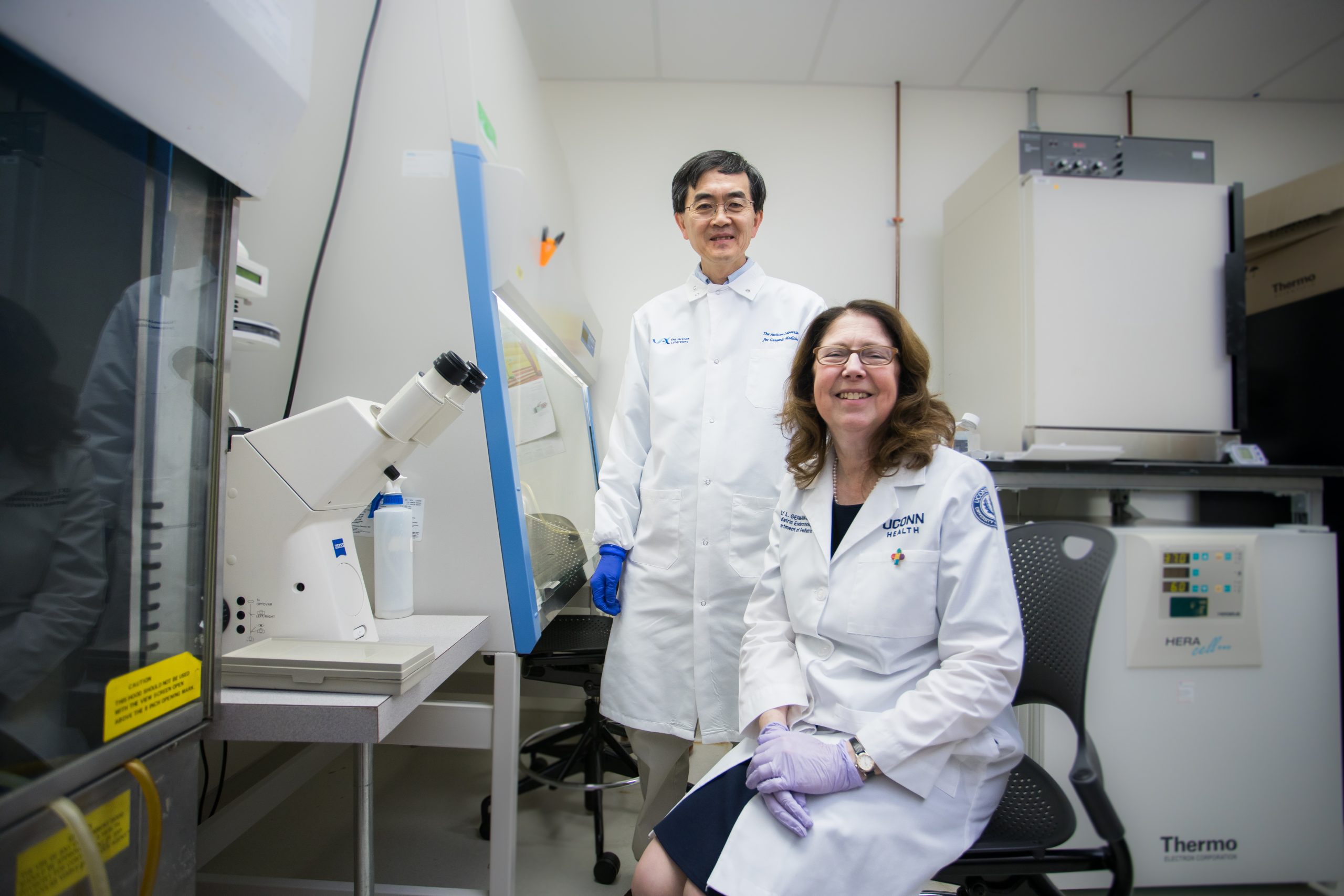In vehicles that are newer than 2015, there’s a little black box tucked inside that records everything that happens during any given trip: Were the windshield wipers turned on, did the driver have to brake harshly or accelerate suddenly, did the blind spot monitors activate?
“A lot of people don’t know about the black box,” says Eric Jackson ’04 MS, ’08 Ph.D., executive director of the Connecticut Transportation Institute (CTI). “Most newer vehicles also have a SIM card that uploads data to the automative manufacturer after you’ve shut the engine off. Every four seconds your GPS location is being tracked, and that’s going to the manufacturer as well.”
While that might seem unnerving to many, for someone like Jackson, who also directs the Connecticut Transportation Research Safety Center within CTI, the data is invaluable.
It can tell him and his team of researchers about the health of the state’s transportation system, where problem spots are developing and whether old ones were fixed. He can ascertain if there’s a certain intersection where drivers continually must stop short or if there’s a place where they’re hitting the gas and routinely speeding.
As CTI celebrates its 50th anniversary this year, this type of analysis is key as it works in tandem with the Connecticut Department of Transportation to research ways to make the transportation system better, safer, and more efficient.
UConn Today caught up with Jackson recently to talk about CTI’s work and what transportation-related issues keep him up at night.
Tell me about the Connecticut Transportation Institute.
CTI started in 1974 after legislation passed that established a transportation institute here at the University of Connecticut. It was part of a movement that was taking place across the country as departments of transportation tried to figure out how to conduct research on our roadways, how to make transportation safer, how to make it more efficient, how to keep costs down, and how to start looking at the economic benefits of doing all this. CTI is composed of three main parts. The Connecticut Advanced Pavement Laboratory conducts research on asphalt pavements to help the state understand how to get the most life out of its pavement to be cost effective. Every state is different in terms of the raw materials they have, so every state has to design their pavements differently. We have an AASHTO accredited pavement laboratory at the University that works hand in hand with a smaller laboratory at the Connecticut DOT. The Training and Technical Assistance Center provides adult education for municipalities across the state, along with the Connecticut DOT, offering training for things like flagger certification and traffic safety. It also has leadership training for municipal workers on how to be better leaders. The Connecticut Transportation Safety Research Center started in 2012 and compiles data on motor vehicle crashes. Every crash that occurs with over $1,000 in damage or with injuries or a fatality is required by state statute to be investigated, resulting in a police report. Those reports are compiled into a database that we house at UConn. CTI makes that data publicly available online, so anybody can query and analyze the database to quantify the number of crashes and trends occurring across the state, at a certain location, even in their own neighborhood. The safety group also has developed an analytics tool for the Connecticut DOT that helps it scan the entire state to identify areas where there's the potential for improving safety based on crash history and crash records. The DOT can use that tool to zoom in on an area, diagnose the issues going on there, and get recommended countermeasures to reduce the number of crashes. We'll provide a cost-benefit analysis, help prioritize which projects actually move forward and go back three to five years later to look at whether the changes affected crash history. Finally, we’ll take that data and feed it back into the system for potential future countermeasures in other areas around the state. When I started at the Institute in 2007, we had nine employees. We're up to 47 employees now, so we've grown dramatically as the needs for a safe and efficient transportation system have only increased.
Is CTI involved with every road construction project around the state?
We're primarily involved in data gathering and making that data available to anybody who wants to analyze it. People will call the DOT and report that there are accidents on their street every single day, but the repository shows, for example, that only three crashes happened there in the last seven years. The DOT will look at the complaints coming in and use crash data to analyze potential problems. Before the Safety Research Center opened in 2012, if somebody wanted crash data, they would have to write a letter to the DOT, which would process it, cut a CD, and mail it to the person. You’d then take that CD, put it in your computer, and try and figure out what they gave you. It was just a common delimited file that you had to figure out how to put into Excel to be able to use. Now our tools are all web-based. You can create maps. You can create data visualizations within a couple of clicks. You can get all the information you could ever want about an individual roadway or intersection. So, no, we're not involved with construction projects, but we may have provided the data that helped others make decisions about those projects.
Congratulations on the Institute’s 50th anniversary. Why is it so significant?
It shows that traffic and transportation are considered a priority within the state, and that the partnership between the Connecticut DOT and UConn is only growing and it's becoming much more beneficial to both groups.
Most people drive, so even if they’re not aware of CTI or know what CTI does, they’re touched by the work you do, right?
We're constantly trying to improve the transportation network around us, and our mission is to make sure the transportation-related decisions that are being made around the state are cost effective, that they're saving the taxpayers as much money as possible, they're producing solutions that are long-term and low-cost while also preventing fatal and serious injuries. Those are the major goals. The Training and Technical Assistance Center and the Safety Research Center focus on injuries, crash severity, and reducing crashes, whereas the Pavement Laboratory is much more interested in trying to make sure that asphalt pavements last as long as possible and that road conditions are as ideal for as long as possible.
But don’t the three dovetail together?
Absolutely. For example, the Pavement Laboratory may look at treatments like high friction overlays. If the road loses its friction, it gets too slippery, and you have a lot more crashes. There's a lot of linkage across all the different groups here at the Transportation Institute.
What are some of the big projects you’re working on now?
We're looking into things like self-driving cars and driver-assistance features. The DOT consults with UConn to explore what's coming up next and how to plan for it. We're looking at putting an autonomous vehicle testing facility here on the Depot Campus, a closed facility where we can drive and test those vehicles. We're also working with the Connecticut DOT on a couple of projects that involve self-driving buses or driver-assisted buses for the CTfastrak system and trying to understand whether riders want these, do bus drivers want these, what's the societal impacts that come along with vehicles that can drive themselves.
Are there any transportation-related worries that you have?
Is there any positive news?
Vehicle technologies are progressing, but I feel like bad behaviors are progressing faster than technology can address them. With the advent of things like airbags, anti-lock brakes, and seat belts, it seems like as soon as we start making cars safer, people start driving more aggressively. We're getting to the point where hopefully technology can start taking back some of that. Can we develop cars that have automatic emergency braking that's effective, can recognize a pedestrian, and avoid hitting the pedestrian that’s out in the roadway? We're seeing a lot of innovative technologies, yet we still have a long way to go. I wouldn't say I'm on the fully autonomous, self-driving bandwagon. I have concerns about widespread adoption and consumer support, but I am on the side that says the more we can augment the driver with advanced capabilities and advanced features, the safer the roadway is going to be. One of the bigger challenges we have is that people hold onto cars sometimes for 15 to 20 years, so the fleet turnover rate is becoming much longer. There is no single solution to our safety issues, but it is more of a host of countermeasures both vehicle- and infrastructure-based to prevent future deaths and severe injuries on our public roadways.



